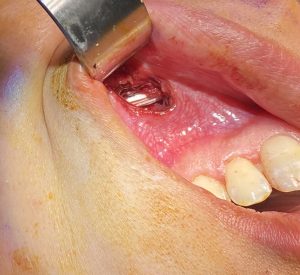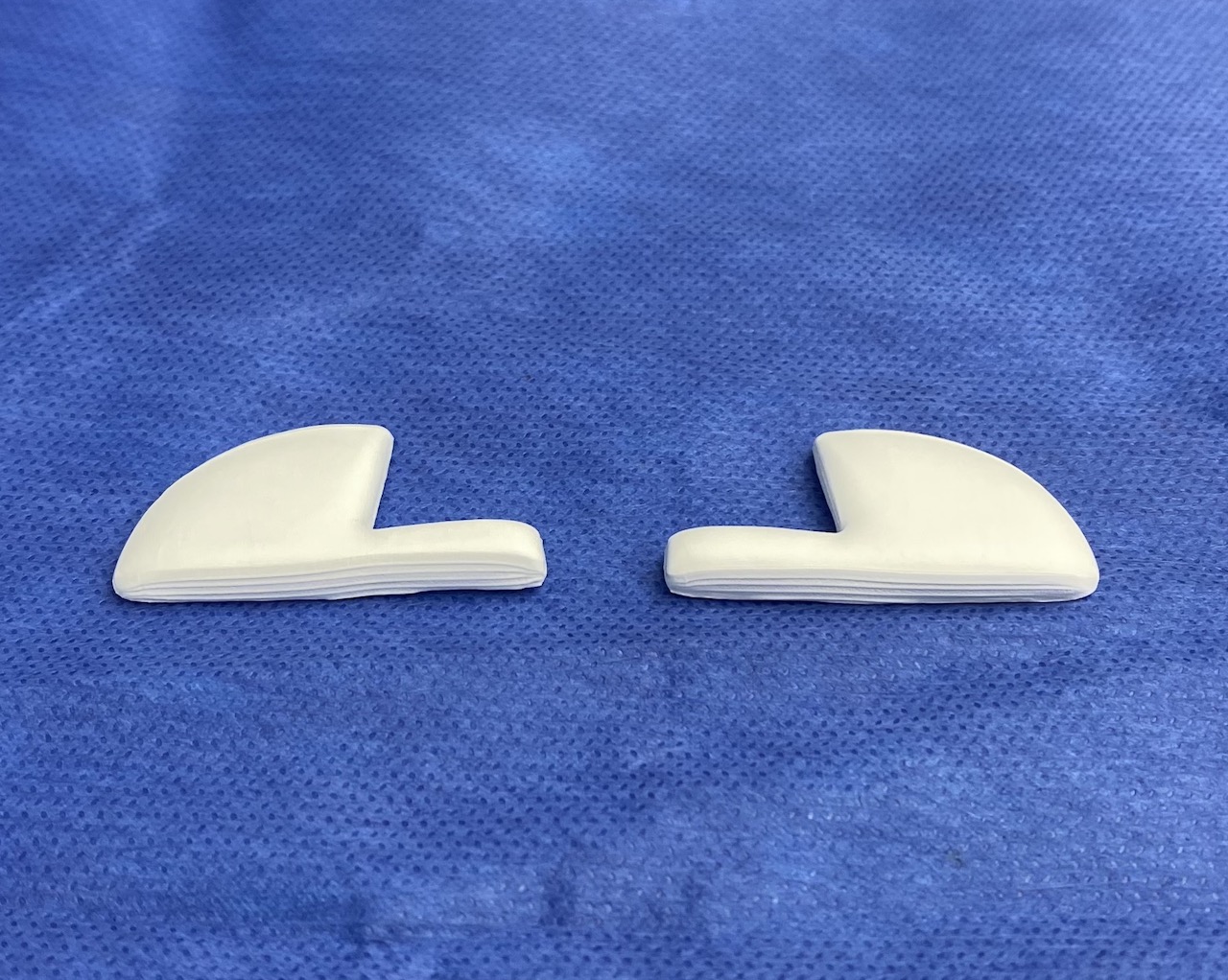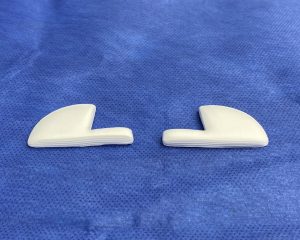Augmentation of the central midface involves augmenting along the pyriform aperture bone that surrounds the nasal cavity. These include the options of premaxillary, paranasal or combined premaxillary-paranasal augmentations. Numerous materials and grafts have been used for these nasal base augmentations, all of which can be successful with good surgical technique and material/graft handling.
One effective implant approach is with the use of ePTFE paranasal and premaxillary implants. ePTFE is most commonly known as Goretex. Its microfibrillar surface structure allows soft tissue ingrowth and adhesion to the implant which has been demonstrated in over thirty years of clinical use.

Because of soft tissue adhesion to ePTFE there is not a need for screw fixation. The pocket should be made as tight up against the nasal mucosa of the pyriform aperture as possible but care must be taken to not inadvertently violate the nasal mucosa. (as this will increase the infection risk considerably) The pocket should be made as close to the size of the implant as possible as this avoids the need for screw fixation and keeps the implant in the ideal paranasal location on each side.
Dr. Barry Eppley
World Renowned Plastic Surgeon




